
Mission and research
Biomedical research forms the basis for the development of new medications – medications that may help us eradicate the serious diseases from which people may suffer. Please find below an overview of our fields of research and achievements.
CLIK ON A TAB FOR MORE INFORMATION
-
Mission of BPRC

The Biomedical Primate Research Centre (BPRC) is a scientific research institute that conducts biomedical research on serious diseases, e.g. AIDS, malaria, hepatitis, corona, tuberculosis as well as ageing-associated diseases such as Parkinson's and Alzheimer's.
Research not involving animal testing
At the same time, we also expend a great deal of energy on the development of testing methods that do not involve animal testing. For this reason, every department in our institute is working on alternative research methods. Moreover, there is a special unit at BPRC that carries out research on methods not involving animal testing.
Collaboration
But that is not all BPRC does. BPRC also collaborates with zoos and helps improve the health of primates living in the wild. BPRC researchers are working hard to develop methods which will help us preserve primate species in an animal-friendly manner.
-
Kind of research

In the past fifty years people's health has spectacularly improved in the developed parts of the world, such as Europe and the USA. People now live longer and often enjoy better health. The main reason for this positive trend is the fact that our medications and vaccines have improved, thanks to scientific research.
We are nowhere near done combating serious debilitating and deadly diseases. Therefore, we must keep increasing our body of knowledge so as to be able to develop new medications and vaccines for diseases which currently cannot be cured or prevented. Biomedical research forms the basis for the development of these new medications.
Biomedical research
Biomedical research gives rise to new knowledge and ideas, as well as the systems used to assess these findings. BPRC plays a central part in biomedical research regarding some of the most serious diseases from which human beings can suffer, e.g. AIDS, malaria, hepatitis and tuberculosis. Furthermore, BPRC seeks to solve medical issues such as transplant rejection and diseases associated with the brain. BPRC does not conduct any research geared towards the development of make-up products, recreational drugs or weapons.
BPRC is only allowed to carry out studies that have been authorised by the Central Authority for Scientific Procedures on Animals.
Jigsaw puzzle
Research on diseases can be compared to a 4,000-piece jigsaw puzzle. Every study and every publication constitutes one piece of the puzzle. Pathogens and pathomechanisms depend on a huge number of factors that may affect their outcome. It takes many years to test every aspect and ensure that a medication is effective. In addition, pathogens mutate, causing us to have to look for new solutions.
More information on:
- Laborary animals' welfare and alternative testing methods
- The Animal Experiments Committee (DEC)
- Our recent publications and other news
- Our most recent news stories, as included in our Scientific Annual Report
- Our fields of research and study results
- A few other things we would like you to know
- Questions & Answers
-
Research areas
Research on alternative methods
-
In vitro technology
In vitro technology
Everyone wants to reduce the number of studies requiring animal testing. We do, too. However, this is not an easy thing to do. For this reason, we are conducting a lot of research on alternative testing methods, guided by the principle of the3Rs: Reduction, Refinement and Replacement.
BPRC promotes and supports the application of alternative methods at each of its individual research departments. In addition, we have a dedicated Alternative Methods unit, which is fully devoted to finding alternative solutions.
The experiments conducted by our Alternative Methods unit
This unit has designed and characterised a large number of cell culture methods. These methods allow researchers to perform tests on relevant cells in a culture system, before even performing any animal testing. Such ‘pre in vivo tests’ significantly reduce the number of experiments involving experimental animals. What is important here is that we often use the remains of animals who have died to cultivate cells. In this way, the end of one experiment constitutes the beginning of another experiment.
The work we do
One of our other objectives is to refine animal testing by reducing the amount of discomfort experienced by the animals. For instance, we focus on the use of adjuvants. Adjuvants are components of vaccines that activate the immune system. Unfortunately, some of the most powerful adjuvants used in animal testing cause adverse reactions, such as inflammation of the skin. One of our fields of research focuses on the development of new adjuvants without side-effects. To this end, we have developed testing techniques that do not involve any animal testing, which are often used by our researchers. We have developed an adjuvant of our own whose efficacy is currently being tested.
Our challenges
Cell culture methods are obvious alternatives to animal testing. However, in actual practice, these methods do not always work out. For instance, long-lived cell lines are only suited to particular research questions. This is because these cell lines are generally immortal, tend to be derived from tumours and are therefore different from regular cells. Primary cell cultures are less long lived, meaning we have to start from scratch more regularly. However, they do provide a much more reliable picture of a regular situation than do cell lines. Perhaps stem cell technology will in future help us establish long-lived cell culture systems.
Another challenge we must address is how to convert the results we have obtained in the lab into methods that can be applied to humans and animals. Validation procedures require that we sometimes use animals.Why we continue to need monkeys for research purposes
To this day, clinical trials cannot be held without prior animal testing. Cell cultures predict how cells may respond. However, it is quite a stretch to predict on this basis how a complex system such as an organ or a living being will respond. We are making progress, slowly but surely. In a small minority of studies, monkeys are the only animals suitable for the study of serious diseases in humans. Pursuant to Dutch law, monkeys can only be used as experimental animals when no alternative method exists. This is why we are doing our utmost to develop such alternative methods.

-
Genetics
Genetics
Every species has genetic variability. So do human beings. Such variable genes are called polymorphism. Examples include the genes that determine the colour of a person's hair or eyes. Genes are hereditary, which is why children share certain characteristics with their parents.
BPRC has a dedicated genetics research department, which focuses on genes for proteins that are part of the immune system. This system plays a major part in infectious diseases, autoimmune diseases and transplant rejections, all of which are fields in which BPRC conducts a great deal of research.
DNA consists of four chemical bases. The sequence of these bases inside a gene can differ from animal to animal. Thanks to a special technique, we can multiply any gene of our choosing. Using advanced equipment, we will then determine the sequence of the four chemical bases in this gene, which will then be expressed in a sequence of four letters (A, C, G, T). Genes are found in every cell of the body. Each gene contains the code for the production of a protein. These proteins control the biochemical processes. In a way, they are the ones carrying out all the work in our bodies.
The main focus area of our research
In our research projects we compare the similarities and differences between the genes of the various primate species (humans, apes and monkeys). Our research mainly focuses on the polymorphic genes of the Major Histocompatibility Complex (MHC) and the killer-cell immunoglobulin-like receptors (KIR). MHC proteins play a crucial role in the recognition of foreign organisms. And when an organ donor and an organ recipient have different MHC, proteins are involved in the transplant rejection. KIR proteins scan cells of the immune system for the presence or absence of MHC proteins. For instance, MHC may be absent from cancer cells or virus-infected cells. If so, KIR proteins will notice the absence and eliminate the cancer cells or virus-infected cells.
How we select the right animal for the right test
Proteins coded by polymorphic MHC partially determine whether someone is susceptible or resistant to a particular disease. We can use such MHC-typing to select the right animals for the right tests. This is a great thing, as it enables us to reduce the number of animals we need for experimentation purposes.
In order to safeguard the quality of the breeding programme for BPRC's colonies and in order to prevent inbreeding, we determine which MHC genes the animals will inherit.
How we share our expertise
We only need to sample each animal's blood once in order to isolate its DNA for genetic research purposes. We can also process white blood cells in such a way that these cells will continue to grow in a cell culture flask. In this way we will always have a source from which we will be able to isolate DNA again, even when its donor is no longer available. Everything we learn during these studies is shared with other research institutes through this database, which is curated by BPRC employees. In addition, we make DNA and cell lines available to other research institutes through our Biobank.

-
Ethology
Ethology
Ethology is the study of animal behaviour. ‘Behaviour’ includes things such as eating, mating, sleeping and collaboration. Individuals' interactions with their surroundings are determined by their behaviour. This being the case, behaviour is the link between the processes going on between individuals and the rest of the world.
Animal behaviour, and therefore primate behaviour, is observed on the basis of the four questions formulated by Nico Tinbergen. These encompass the four ways in which biological processes can be studied: from the point of view of fitness value (function), the history of evolution (evolution), the way in which behaviour comes about (mechanism) and the development of the individual's behaviour (ontology). We study the social behaviour and social intelligence of primates from these four angles.
How monkeys behave
All diurnal apes and monkeys live in groups featuring a large variety of individuals: young and old, families and outsiders, males and females. They are highly social animals who show off a large variety of social behaviours – behaviours targeted at others. They can be aggressive, but also quite friendly. They will quarrel, but also make up afterwards (reconciliation). In addition, primates recognise members of their own groups and members of other groups, and they maintain different types of social relations, ranging from friendly to neutral or even hostile. It is crucial to the well-being of apes and monkeys that they have the ability to interact with others.
Social skills and intelligence
How does monkeys' social behaviour evolve and develop? And how comparable is their behaviour to human behaviour? Our ethological research largely focuses on the evolution and mechanisms of social behaviour. Individuals may have a conflict of interest, in that members of their own species are both potential rivals and potential allies. Whose favour do you curry, and whom do you consider a rival? You need good social skills to recognise potential friends and rivals, which ability forms the basis for monkeys' intelligence, and therefore for human beings' intelligence.
The focus of our research
It is believed that this social selection pressure played an important part in the evolution of non-human primate intelligence. It is clear that the way in which monkeys express themselves in a social context depends on the animal's personality, its position in the group, its intelligence and the other monkeys' interests. BPRC's researchers observe how monkeys behave in groups and which factors affect their behaviour. Our monkeys live in pseudo-natural groups which mimic the social dynamics of groups living in the wild. Our observations have contributed to the design of BPRC's current social enclosures for the monkeys, and continue to contribute to this day to improvements to and monitoring of the monkeys' living conditions. It goes without saying that our observations do not cause the animals any discomfort.
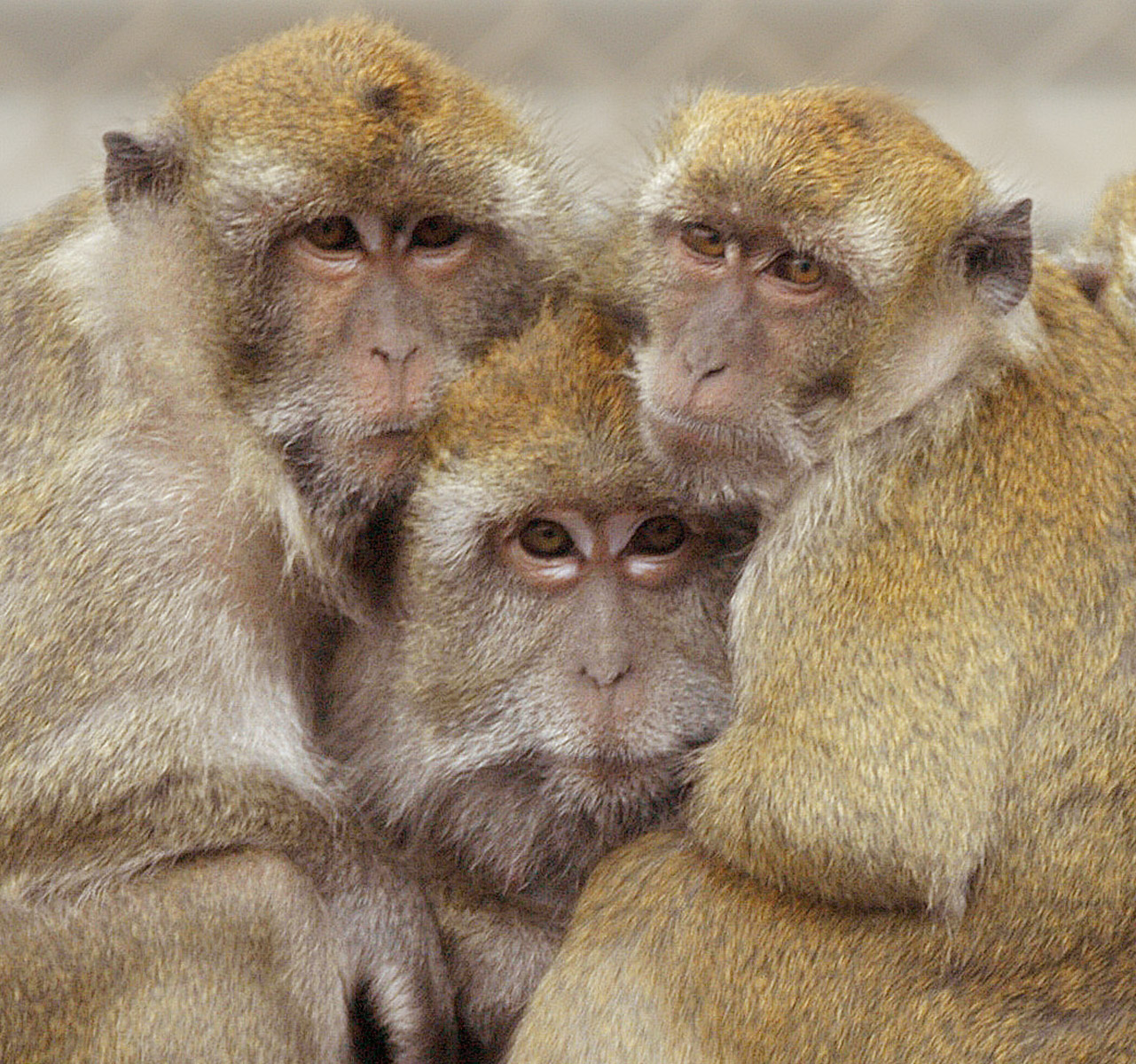
Infectious diseases
-
Immune system and vaccines
Immune system and vaccines
Our immune system fights invading pathogens. A vaccine teaches the immune system to recognise and eradicate these pathogens. But our immune system is complex, and not all pathogens can be dealt with in the same way. The exact defence mechanisms have only rarely been identified.
New generation of vaccines
For centuries, vaccines have shown to be the best way to protect against infectious diseases. The first generation of vaccines were just attenuated or dead virus particles. The production process is very slow, and there is a lot of variation between the batches. What's more, our current day and age requires vaccines for 'new' pathogens. All this together requires new vaccine concepts.
Development
The road a new vaccine must take to end up in a GP's office is long and starts with a theory. It can take years before a theoretical idea is translated into an experimental vaccine.
It all starts with questions like: how can we fool the immune system to believe that there is a pathogen entering the body that needs to be dealt with? Which part of the pathogen is most visible to the immune system? How can we replicate that part? Does it induce immune memory? Does it protect against infection or disease?
In the end, the new idea must be tested in what is called a proof-of-principle study. Does the potential vaccine indeed do what it is designed to do? And, if yes, is it safe? But animal models are also of great value when an experimental vaccine fails. A proof-of-principle study during this relatively early stage of development prevents expensive follow-up studies.
BPRC research
Among other things, virologists are working on vaccines for emerging viruses. According to the WHO, emerging viruses require extra attention because they spread quickly and are a risk to humans or animals. These viruses include corona virus, zika virus, West Nile virus, yellow fever virus, rift valley fever virus and dengue virus. But we also study more well-known viruses, such as the flu and HIV.

-
Corona
SARS-CoV-2
Little is known about SARS-CoV-2, the virus that causes the lung disease COVID-19. At the moment, there are no drugs or vaccines yet. BPRC uses its expertise and monkeys to change that.
Infection model
Monkeys, like humans, are permissive to SARS-CoV-2. BPRC has permission from the CCD to conduct experimental infections to test vaccines and new drugs. How does that work? Monkeys go under anesthesia and are then exposed to the virus under controlled conditions. Unlike in humans, we therefore know exactly when, with which specific strain of the virus and with how much virus, the monkey is infected. After that, the animals are anesthetized every day for a smear from the mouth and a blood sample. The samples then go to our own laboratory for research. In this way, we map out how the virus behaves in the body and how the immune system reacts to the virus.
Safety precautions
We take strict precautions to prevent the virus from spreading. For example, the rooms where the animals are housed are under under-pressure, so that virus particles cannot escape from the room. Animal caretakers and lab technicians protect themselves with protective clothing. No ordinary mouth masks, but with a kind of moon suits. They breathe in a mask where clean air flows in, which is filtered by a motor with established HEPA filters. Everyone has their own mask and filter unit, which is hung on a belt around the stomach.
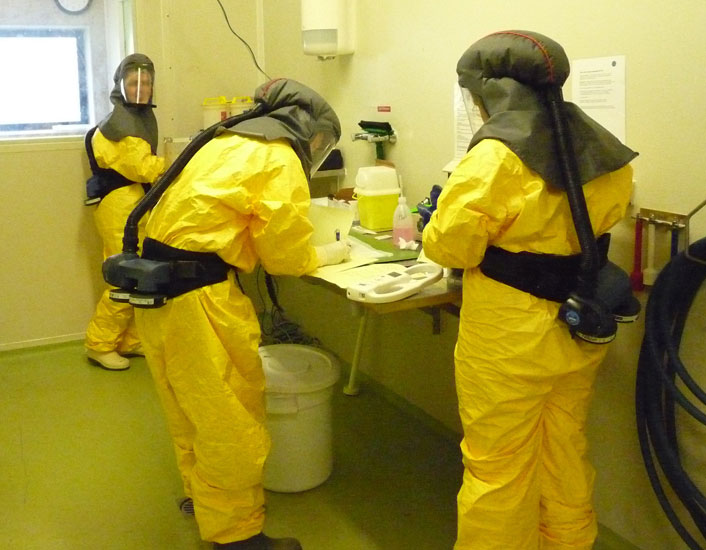
New vaccines and medicines
Experts from all over the world are currently developing new vaccines and drugs. In order to lose as little time as possible, (international) scientific collaborations have been set up between research groups with different expertise. The role of BPRC is to evaluate early experimental agents.
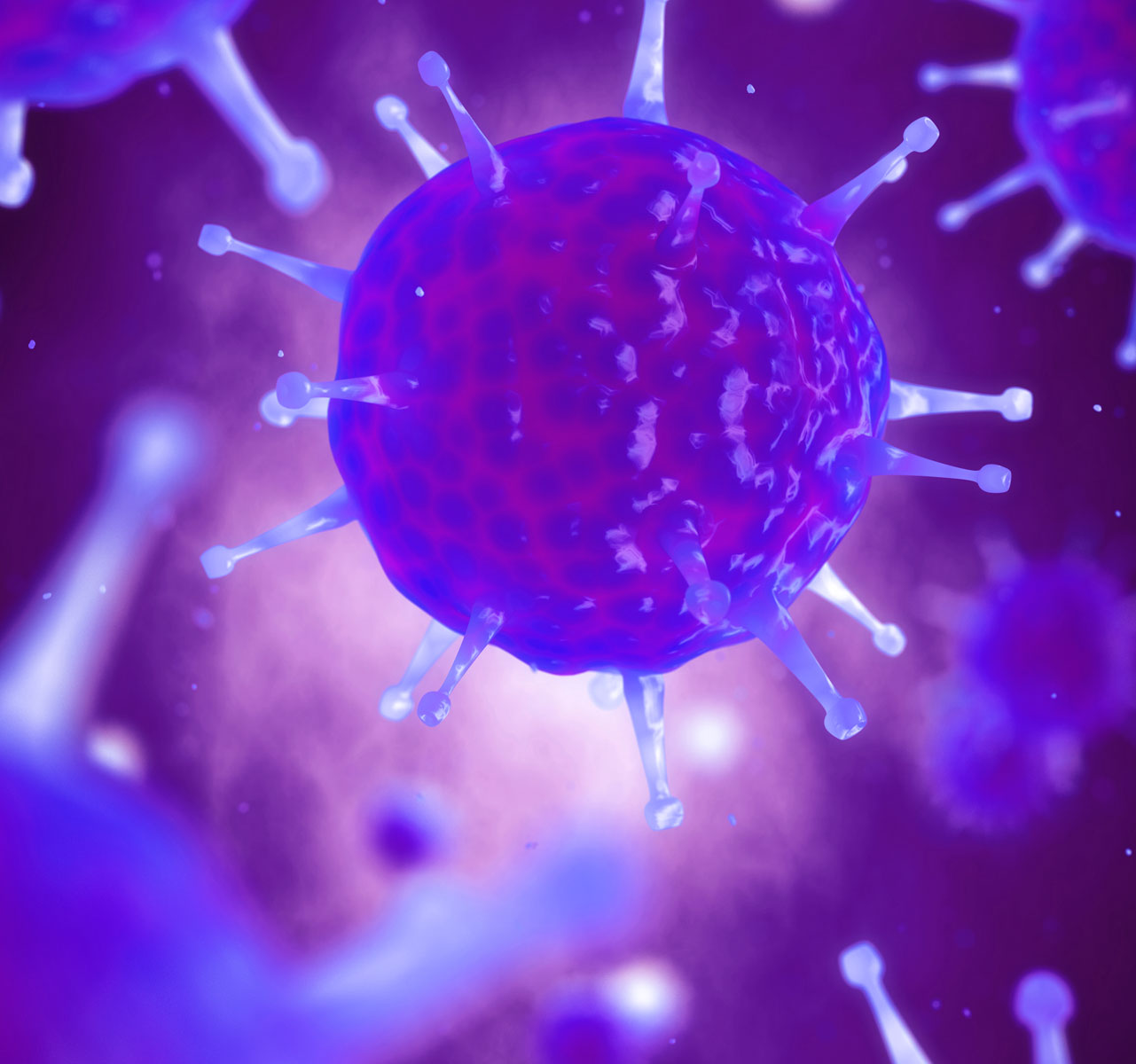
-
HIV / AIDS
HIV / aids: still 7,000 new infections every day
In 1982, a mysterious disease named aids reared its head. Before long, scientists discovered that the disease was caused by HIV.
In the early days, HIV research was performed on chimpanzees. That was necessary, since only humans and chimpanzees are susceptible to HIV infection. Thanks to chimpanzees, we now know how HIV spreads throughout the body and how the immune system deals with the virus.
In 1983, SIV was discovered – a HIV-like virus that infects macaques. Experimental SIV infections provided even more insight into the course of the infection and how smart the virus is in fooling our immune system.
How can we treat or prevent HIV?
All this knowledge was required to develop anti-HIV medication. Thanks to these drugs, HIV is no longer necessarily a death sentence. Unfortunately, the current drugs cannot stop the HIV epidemic. Another 7,000 people are still infected every day.
Smarter than most other viruses
Our best hope of stopping the HIV epidemic is in developing a vaccine. A vaccine trains the immune system to recognise and eliminated a pathogen as soon as we encounter it in real life. An HIV vaccine is generally a piece of the virus's outer shell. Researchers have been working on HIV vaccines since the 1980s, but HIV seems to be much 'smarter' than other viruses. It has developed many ways to escape the immune system.
New kind of science: SHIV
During the rise of HIV, scientists discovered a new field of science: molecular biology. Molecular techniques enabled scientists to generate a chimeric virus where the envelope of SIV was replaced by an HIV envelope. The artificial viruses were referred to as SHIV. Thanks to SHIV, we can now evaluate experimental HIV vaccines in macaques. This is necessary, since, no matter how good a theoretical idea may be, the protective effect of an HIV vaccine depends on numerous unknown factors. And so far, only a few experimental vaccine candidates were good enough to proceed into the pipeline for human vaccine development.
Many vaccines are based on the induction of specific antibodies. After vaccination, the immune system recognises the vaccine as a foreign invader. In response, the immune system produces antibodies. The immune memory ensures a quick response when the real virus is encountered. Animal studies showed that the induction of antibodies is not sufficient for HIV protection.
Protection against HIV is possible
Is it impossible to protect people from HIV? No. Scientists have known since 1992 that some people will not be infected with HIV, despite repeated unprotected sex with an HIV positive partner. This suggests that vaccine-induced protection may be an option.
What made these people so special? For that, we need some background information. The people in question were prostitutes in Kenya. Researchers found so-called cytotoxic T cells in their vagina. These specific immune cells protected them from contracting HIV. However, if they gave up sex work and returned to the business later in life, the cells were no longer present and they still got infected. Hence, HIV vaccines are designed in such a way that they not only induce antibodies but also cytotoxic T cells.BPRC research using SIV and SHIV
In order to evaluate an HIV vaccine, two things are necessary. A functional immune system and an animal model that is susceptible to HIV infection. At BPRC, we use the HIV or SHIV infection model in macaques.
To test a vaccine, we vaccinate macaques. Traditionally, we used a syringe. Nowadays, we are also investigating other techniques to administer a vaccine, such as small, needleless devices that use high pressure to inject a vaccine.
During a typical vaccine study, the animals receive three vaccinations, with an interval of a few weeks. Two weeks after each immunisation we draw a little blood. The blood is analysed in our laboratory. BPRC uses various techniques to investigate whether the vaccine has had the desired effect. We also perform a functional analysis of the vaccine antibodies and T cells. We can check the quality of the antibodies, for example, by mixing them with virus and subsequently testing if the virus is neutralised.
The 3Rs in HIV research
Anyone who works with laboratory animals in Europe is required to explain why their research cannot be performed in any other way. Can it be done without using laboratory animals? Or can it be done using fewer animals? Which techniques are available to minimise the discomfort for the laboratory animals? In other words: have the 3Rs been implemented?
Replacement
HIV/SIV research has been groundbreaking for the entire biomedical field. It has led to many new – mostly in-vitro and animal-free - research methods used by diagnostic and research laboratories all over the world. Because HIV can only infect humans and chimpanzees, for a long time there was no other option than to study the effects of HIV and HIV vaccines in chimpanzees. With the development of SHIV, it is now possible to conduct this research with macaques, meaning chimpanzees are no longer needed. Unfortunately, there is currently no replacement method for studying the complex interaction between a virus or a vaccine and the immune system.
Reduction
We aim to use as few animals as possible. More and more animal-free techniques are available and are used to exclude ineffective vaccine candidates preemptively. Several of the early vaccines would probably not be tested on animals now, for example because these models show that they would not produce enough antibodies or cytotoxic T cells.
We also use computer models to design theoretically better HIV vaccines.Refinement
The Netherlands National Committee for the protection of animals used for scientific purposes uses the following definition for the refinement of animal testing: the refinement of animal testing aims to reduce the discomfort of laboratory animals and/or to optimise laboratory animal welfare.
Good living conditions are a key part of our animal welfare policy. At BPRC, animals are always housed in social groups and never alone, and we have an extensive environmental enrichment programme. Furthermore, the animals are trained to reduce stress during experiments. Find out more.
The rise of HIV and the unprecedented progress in biomedical science go hand in hand, both in terms of technology and animal welfare. As a result, much more data can be collected per animal and their discomfort is minimised.

-
Influenza
The flu – not as harmless as it seems
Many people consider the flu to be a rather harmless disease. Unfortunately, that is not true. The flu can have nasty consequences, especially in the elderly, young children and people with a compromised immune system.
Seasonal flu versus pandemic flu
We are all familiar with the seasonal flu. Yet, we often mistake a severe cold for the flu. However, the flu is only the flu when it is caused by an influenza virus. There are many different clades and sub-clades of influenza virus.
In addition to the seasonal flu, there is the pandemic flu. A good example of a pandemic flu is the Spanish flu. The Spanish flu broke out in 1918 and claimed between fifty and one hundred million lives. The pandemic virus was most likely the result of recombination between an avian flu virus and a human flu virus, which fused together in a pig. The new virus happened to be highly contagious and pathogenic to humans.
Unfortunately, the question is not whether history will repeat itself, but rather when. So, we should be prepared.
Flu vaccine
Every autumn, people in risk-groups are invited by their GP for a flu shot. This is a vaccine that teaches the immune system to recognise and attack flu viruses as soon as they enter the body. But flu viruses change over time and the new virus variants may no longer be recognised by the trained immune system. To overcome this, people need to be vaccinated every year with a new vaccine that prevents against circulating flu viruses.
Predicting the most effective composition for the annual flu vaccine is a complicated process. The production process takes quite a bit of time, and it takes months before sufficient vaccine supply is available to vaccinate everyone. It would therefore be a large step forward if people no longer needed a new flu-vaccine each year. For instance, if the 2019 vaccine would also provide protection in the years to come.
All over the world, scientists are working on a universal flu vaccine that offers protection against different types of influenza, including pandemic viruses.
Universal flu vaccine
Current flu vaccines are based on the induction of antibodies that neutralise the virus. For a universal vaccine, however, an immunological memory of neutralising antibodies does not suffice. A universal vaccine will have to activate other mechanisms of the immune system as well, but which mechanisms is currently not known.
Flu research at BPRC
BPRC is committed to improving influenza vaccines. In general, influenza is a transient infection that is eradicated by the immune system. We do not yet have a complete understanding of all the processes involved. Experimental influenza infections may help to identify crucial immune events and potential vaccine targets.
Furthermore, controlled flu infections can be used to investigate experimental vaccines. Much of this vaccine research is done with animal-free methods. Only the most promising candidates will ultimately be evaluated in a proof of principle study using laboratory animals. Mostly in rodents and ferrets, but depending on the research question, non-human primates may be necessary. BPRC has developed multiple non-human primate influenza infection models.
The efficacy of an experimental vaccine is determined by comparing the viral load in vaccinated animals and control animals. The results of these ‘proof of principle’ studies largely determine if a vaccine candidate will be further developed for human use, or not.
The 3Rs in influenza virus research
Anyone who works with laboratory animals in Europe is required to explain why their research cannot be performed in any other way. Can it be done without using laboratory animals? Or can it be done using fewer animals? Which techniques are available to minimise the discomfort for the laboratory animals? In other words: have the 3Rs been implemented?
Replacement
A vaccine is designed to activate an immunological memory. To evaluate an experimental vaccine, a fully functional immune system is required. In the case of the influenza virus, we currently do not know how this memory is generated and what mechanisms in the immune system are responsible. As such, there is currently no animal-free method to study the interaction between an influenza virus vaccine and the immune system.
Reduction
We aim to use as few animals as possible, but new vaccines and medication are sorely needed. More and more animal-free techniques are available, but eventually we have to perform a proof of principle experiment in a live animal that is susceptible to the virus and has a fully functional immune system.
Clinical symptoms of flu are difficult to quantify in non-human primates. Most disease processes take place in the lungs. In the past, lung tissue was only accessible after euthanasia. Nowadays, we use PET-CT scans. This non-invasive technique allows multiple scans of the lungs of an animal, and therefore follow-up over time. Furthermore, PET-CT helps to standardise the experiments. Implementing PET-CT in influenza research decreases the number of animals that are used for influenza research.
Refinement
The Netherlands National Committee for the protection of animals used for scientific purposes uses the following definition for the refinement of animal testing: the refinement of animal testing aims to reduce the discomfort of laboratory animals and/or to optimise laboratory animal welfare.
PET-CT is very instrumental in refining our influenza infection models. Pet-CT allows the detection of lung damage at a very early stage. This helps to identify humane endpoints and minimise unnecessary suffering.
Good living conditions are a key part of our animal welfare policy. At BPRC, animals are always housed in social groups and never alone, and we have an extensive environmental enrichment programme. Furthermore, the animals are trained to reduce stress during experiments. Find out more.
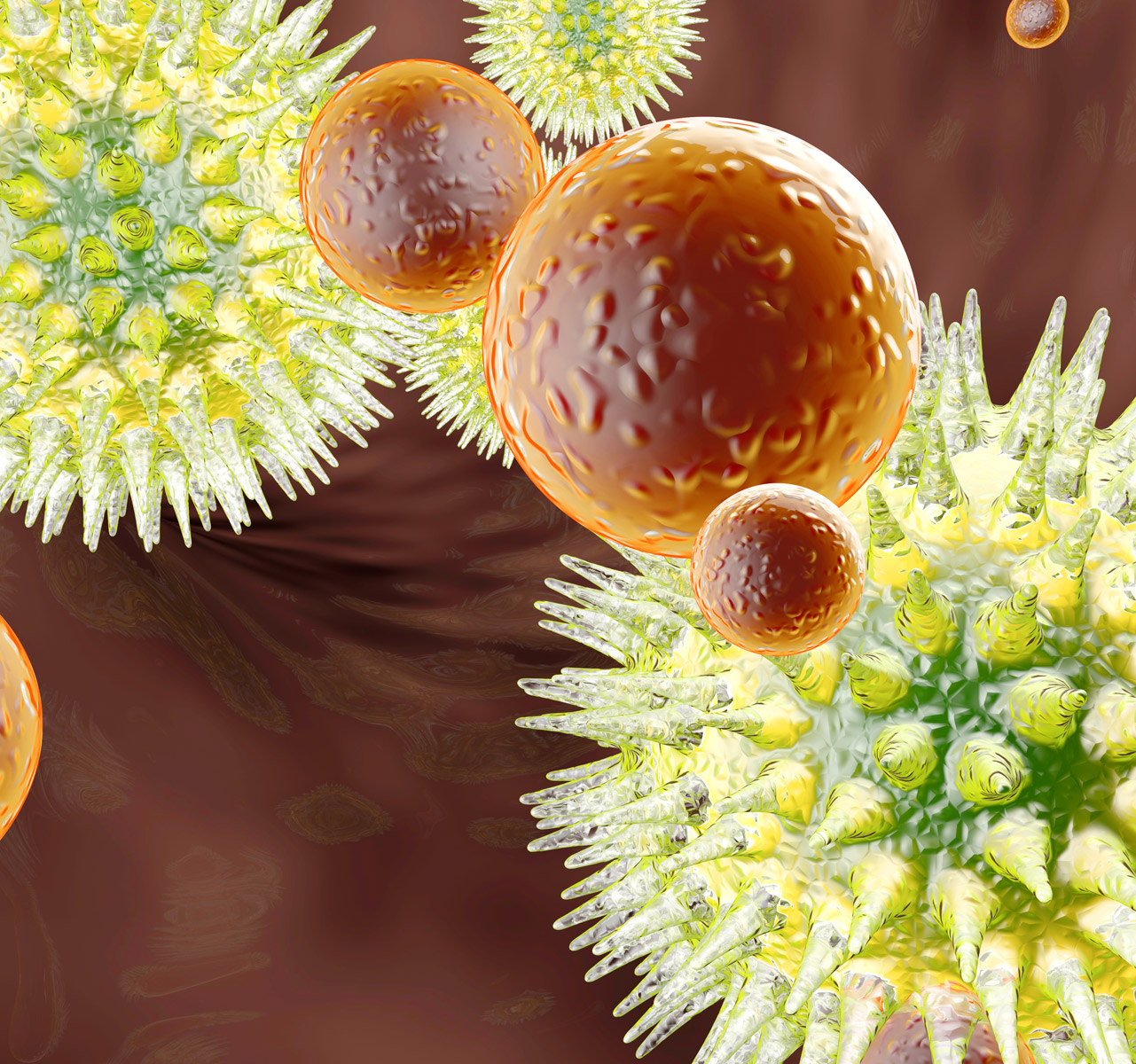
-
Dengue fever
Dengue; A tropical disease
Dengue fever is caused by the dengue virus. All over the tropics and subtropics, hospitals are flooded with infected patients during the rainy season.
Dengue fever
The rainy season is a time with high mosquito activity. It is not surprising, therefore, that most dengue infections occur during this time of the year. Although there is no adequate treatment or medication for dengue fever, proper medical care increases the odds of survival. Every year, an estimated 500,000 people are hospitalised with severe cases of dengue fever, sometimes with life-threatening complications. As a result, local hospitals are full of dengue patients during an epidemic. A medicine to treat dengue fever would be a giant leap forward for medical care in the tropics. Since there are no animal-free techniques available, new drugs are tested in animals at some point during the experimental phase.
Second dengue virus infection leads to increased risk of complications
There are four sub-types of the dengue virus, which are all quite similar. Being infected with one particular sub-type prevents a subsequent infection with that same sub-type. However, a second infection with a different sub-type leads to an increased risk of illness and dengue-related complications. Scientists refer to this phenomenon as 'antibody-mediated enhancement'.
Vaccine to prevent infection
A vaccine is the most effective way to prevent infection and spreading of an infectious disease. Usually, a vaccine teaches the immune system to recognise and attack a particular pathogen. For dengue virus, however, things are a bit different.
There is, in fact, a commercially available dengue virus vaccine, but it is not advised for everyone. In extreme cases the vaccine can actually aggravate dengue virus infection due to the antibody-mediated enhancement phenomenon mentioned above. It is for that reason that the World Health Organization (WHO) only recommends the vaccine to be used by people who live in an area where dengue virus is commonly present. In that case the vaccine protects from a second infection. The vaccine is not recommended for young people or tourists. Scientists from all over the world are working to develop better and safer dengue vaccines that can be used by everyone.
Antiviral drugs
Another way of preventing serious complications caused by dengue virus is to specifically inhibit the virus – for instance, with antiviral drugs that prevent viral reproduction. So far there is no antiviral drug to inhibit dengue virus.
BPRC research
BPRC evaluates experimental dengue virus vaccines and medication in what is called a dengue virus infection model.
We vaccinate monkeys with the dengue vaccine. After a few weeks, we draw a little blood to test it on dengue-specific antibodies. The presence of these antibodies is a first indication the vaccine may be effective. To test if the antibodies indeed prevent dengue virus infection, we expose the animals to the virus. This is done under controlled conditions to ensure reproducibility.
Rhesus macaques typically do not show clinical symptoms after dengue virus infection. As such, the amount of virus in the blood is an important indicator for the severity of infection. To determine the viral load over time, we draw a small blood sample at regular time points after exposure.
Just like any other scientific experiment, an animal study requires proper controls. Since a virus consists of genetic material surrounded by a protein shell, it cannot exist on its own. Although a virus is not a living being, it can die. In order to prevent drawing false conclusions from an animal study – for example based on dead virus instead of live virus – we include 'control animals' in each study. These animals are not vaccinated before being exposed to the virus.
The efficacy of an experimental vaccine is determined by comparing the viral load in vaccinated animals and control animals. The results of these ‘proof of principle’ studies largely determine if a vaccine candidate will be further developed for human use, or not.
Potential new medication is tested in a similar way, and here too the viral load in the blood and organs is an important factor. The difference between treated and untreated animals may indicate how well a particular medicine works.
The 3Rs in dengue virus research
Anyone who works with laboratory animals in Europe is required to explain why their research cannot be performed in any other way. Can it be done without using laboratory animals? Or can it be done using fewer animals? Which techniques are available to minimise the discomfort for the laboratory animals? In other words: are the 3Rs implemented?
Replacement
A vaccine is designed to activate an immunological memory. To evaluate an experimental vaccine, a fully functional immune system is required. In the case of the dengue virus, we currently do not know how this memory is generated and what mechanisms in the immune system are responsible. As such, there is currently no animal-free method to study the interaction between a dengue virus vaccine and the immune system.
We can only test experimental medication for dengue virus using animals that are susceptible to the virus. We know that the virus is able to reproduce in rhesus monkey blood, which is why we are using these animals in order to test experimental medication.
Reduction
Only the most promising vaccine candidates are evaluated in animals. Numerous animal-free techniques are used to prevent ineffective or less effective vaccines from being tested in animals. Combining several vaccine candidates in one study also reduces the number of animals needed.
Refinement
The Netherlands National Committee for the protection of animals used for scientific purposes uses the following definition for the refinement of animal testing: the refinement of animal testing aims to reduce the discomfort of laboratory animals and/or to optimise laboratory animal welfare.
Good living conditions are a key part of our animal welfare policy. At BPRC, animals are always housed in social groups and never alone, and we have an extensive environmental enrichment programme. Furthermore, the animals are trained to reduce stress during experiments. Find out more.
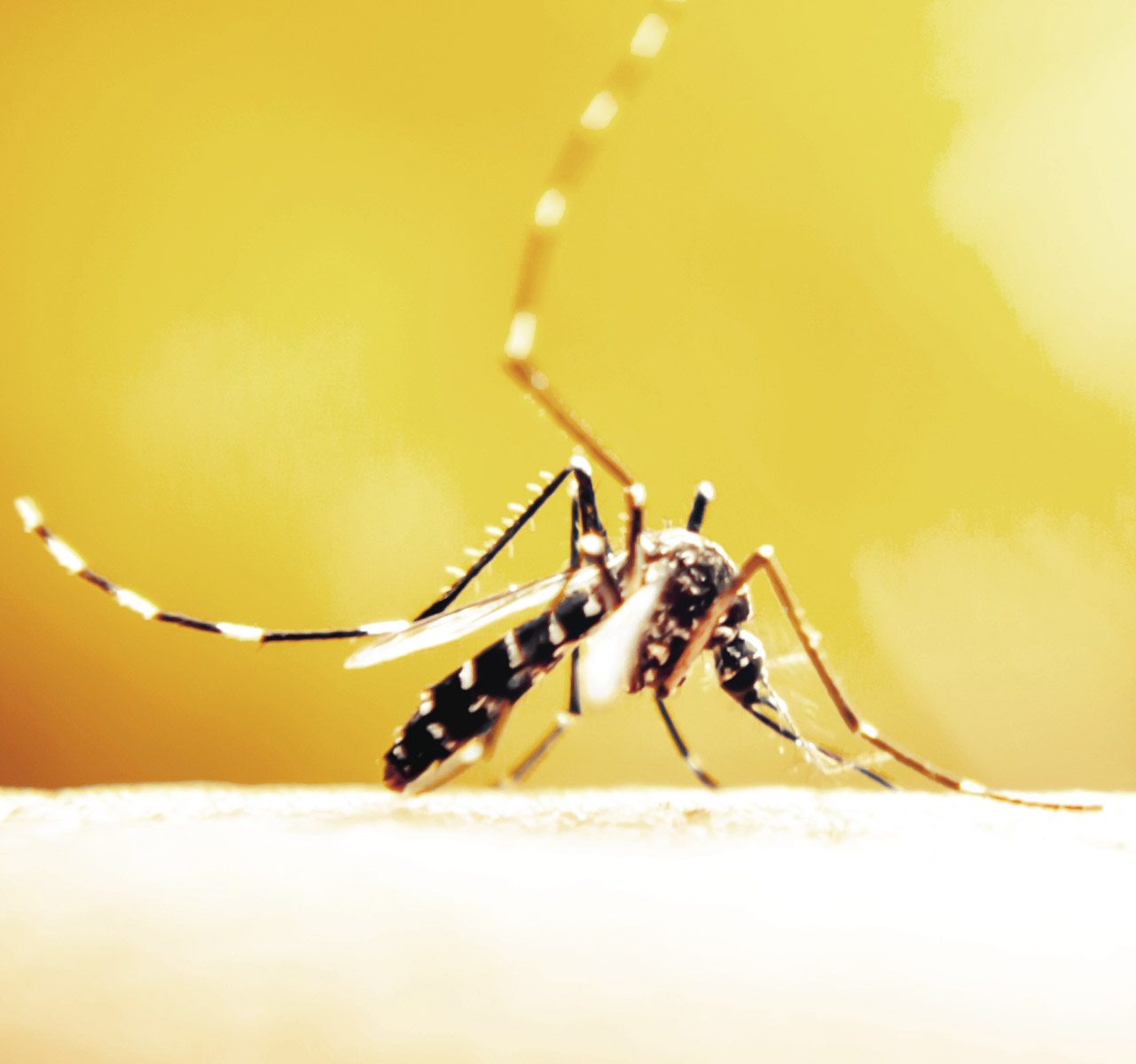
-
West Nile virus
The West Nile virus
How can we protect ourselves from a virus that spreads as the crow flies?
The West Nile virus is a relatively unknown virus should not be underestimated. Especially because it is spread by our own European mosquitoes and birds.The spread of the West Nile virus
The West Nile virus was first discovered in 1937, in the West Nile district in Uganda. It took until the 1990s, however, to find its way to Europe and the Americas.
Birds are the main carriers of the West Nile virus, especially blackbirds and jackdaws. Their blood can contain high concentrations of the virus. Mosquitoes that feed on infected birds pass it on, not only to other birds, but also to humans and horses.
West Nile fever
Most people are unaware of their West Nile virus infection. Only one in five infected people will develop flu-like symptoms, also known as the West Nile fever. One per cent of the patients who contract West Nile virus suffer from serious complications, such as inflammation of the brain. For people with an impaired immune system, the virus can even be fatal.
Vaccines
A vaccine is the most effective way to prevent infectious diseases. A vaccine teaches the immune system to recognise and eradicate the virus when it comes across it in real life. There are various West Nile virus vaccines available for horses, but these are not approved for human use. West Nile virus vaccines are under development.
BPRC research
BPRC is also involved in this process. Experimental vaccine candidates that meet all the known requirements can be evaluated in monkeys.
For this, BPRC developed two in vivo models. Both rhesus monkeys and marmosets are susceptible to the West Nile virus infection and have an immune system that is similar to that of humans. In addition, experimental infection studies showed that the West Nile virus infection in monkeys strongly resembles the infection in humans. As a result, our West Nile virus infection models are good models to evaluate new experimental West Nile virus vaccines.
During a typical vaccine study, the animals are vaccinated at regular intervals. Two weeks after each immunisation, we take a blood sample and examine this in the laboratory. The presence of West Nile virus-specific antibodies is a first indicator that the vaccine may work. In order to assess if the vaccine actually protects from experimental infection, we expose animals to the virus under controlled and reproducible circumstances, such as a fixed number of infectious particles.
Rhesus monkeys and marmosets do not show clinical symptoms after West Nile virus infection, so West Nile virus concentration is measured in blood samples taken at regular intervals.
Just like any other scientific experiment, an animal study requires proper controls. Since a virus consists of genetic material surrounded by a protein shell, it cannot exist on its own. Although a virus is not a living being, it can die. In order to prevent drawing false conclusions from an animal study – for example based on dead virus instead of live virus – we include 'control animals' in each study. These animals are not vaccinated before being exposed to the virus.
The efficacy of an experimental vaccine is determined by comparing the viral load in vaccinated animals and control animals. The results of these ‘proof of principle’ studies largely determine if a vaccine candidate will be further developed for human use, or not.
The 3Rs in West Nile virus research
Anyone who works with laboratory animals in Europe is required to explain why their research cannot be performed in any other way. Can it be done without using laboratory animals? Or can it be done using fewer animals? Which techniques are available to minimise the discomfort for the laboratory animals? In other words: have the 3Rs been implemented?
Replacement
A vaccine is designed to activate an immunological memory. To evaluate an experimental vaccine, a fully functional immune system is required. In the case of the West Nile virus, we currently do not know how this memory is generated and what mechanisms in the immune system are responsible. As such, there is currently no animal-free method to study the interaction between a West Nile virus vaccine and the immune system.
Reduction
Only the most promising vaccine candidates are evaluated in animals. Numerous animal-free techniques are used to prevent ineffective or less-effective vaccines from being tested in animals. Combining several vaccine candidates in one study also reduces the number of animals needed.
Refinement
The Netherlands National Committee for the protection of animals used for scientific purposes uses the following definition for the refinement of animal testing: the refinement of animal testing aims to reduce the discomfort of laboratory animals and/or to optimise laboratory animal welfare.
Good living conditions are a key part of our animal welfare policy. At BPRC, animals are always housed in social groups and never alone, and we have an extensive environmental enrichment programme. Furthermore, the animals are trained to reduce stress during experiments. Find out more.
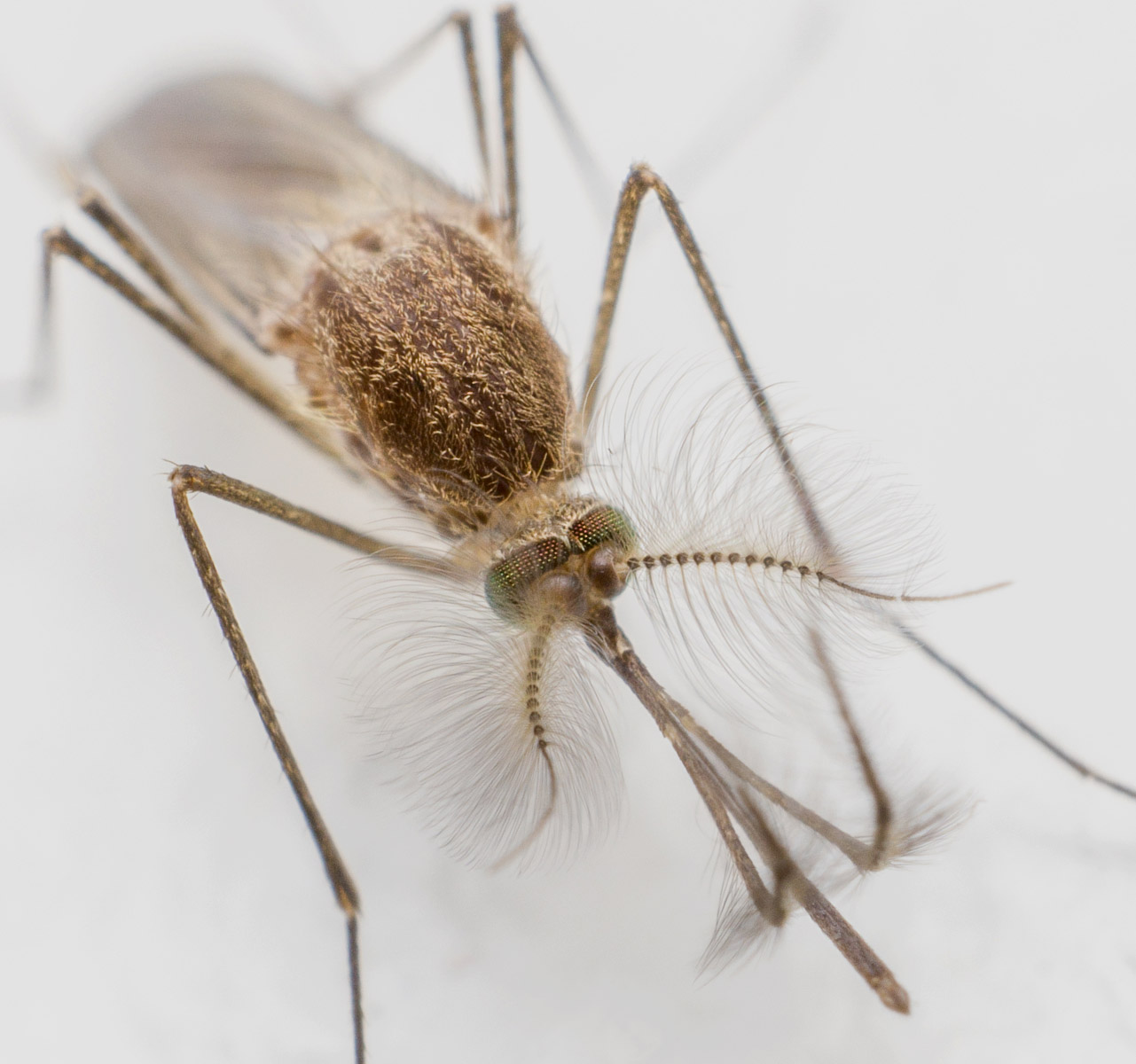
-
Zika
Zika
How a vaccine can prevent serious birth defects
Laboratory animal research has shown that the Zika virus can cause brain anomalies in unborn babies. Scientists from all over the world are working on a vaccine that will protect future mothers and their unborn babies from Zika virus.
What is Zika virus?
When scientists were investigating yellow fever mosquitoes in Uganda in 1947, they unexpectedly discovered a new virus. They called it Zika virus, after the Zika forest where it was discovered. For a long time, Zika virus stayed under the radar, until it was linked to congenital brain anomalies in newborn children in South America in 2016.
The spread of the Zika virus
The Zika virus is transmitted by the yellow fever mosquito (Aedus Aegypti). Originally, this mosquito was only found in Africa, but it has since spread across all tropical and subtropical regions. Zika virus can thus be 'imported' from any of the areas where the yellow fever mosquito can be found and spread from there, which has now happened in most countries.
Zika fever
Most people infected with Zika virus will not really notice much of their infection. About one in five people will get Zika fever, a relatively mild disease that causes fever, eye infections, rashes and sore muscles. Zika infection during pregnancy, however, can significantly increase the chance of congenital brain anomalies. Furthermore, Zika virus can cause rare neurological complications like Guillain-Barré syndrome.
BPRC research into Zika virus
So far, there is no indication that people can be re-infected with Zika virus, suggesting Zika virus activates the immune system and induces immunological memory. This implies that a vaccine could theoretically prevent Zika virus infection, which is why experimental vaccines need to be evaluated. First, we test it in animal-free laboratory tests and, only once the vaccine meets all the known criteria, in what we call an infection model.
BPRC evaluates experimental Zika virus vaccines in rhesus monkeys. A few weeks after vaccination, we take a blood sample from the animals, which we examine for Zika-specific antibodies. The presence of these antibodies is a first indicator that a vaccine may work. To test if the antibodies are actually effective, the animals are exposed to the virus. This is done under controlled and reproducible conditions, such as a known quantity of virus and at a given point in time.
Rhesus monkeys do not show clinical symptoms after Zika virus infection. The viral load in their blood is therefore an important indicator of the ‘severity’ of the infection. Therefore, we regularly take blood samples to determine Zika virus concentration.
Just like any other scientific experiment, an animal study requires proper controls. Since a virus consists of genetic material surrounded by a protein shell, it cannot exist on its own. Although a virus is not a living being, it can die. In order to prevent drawing false conclusions from an animal study – for example based on dead virus instead of live virus – we include 'control animals' in each study. These animals are not vaccinated before being exposed to the virus.
The efficacy of an experimental vaccine is determined by comparing the viral load in vaccinated animals and control animals. The results of these ‘proof of principle’ studies largely determine if a vaccine candidate will be further developed for human use, or not.
The 3Rs in Zika virus research
Anyone who works with laboratory animals in Europe is required to explain why their research cannot be performed in any other way. Can it be done without using laboratory animals? Or can it be done using fewer animals? Which techniques are available to minimise the discomfort for the laboratory animals? In other words: have the 3Rs been implemented?
Replacement
A vaccine is designed to activate an immunological memory. To evaluate an experimental vaccine, a fully functional immune system is required. In the case of the Zika virus, we currently do not know how this memory is generated and what mechanisms in the immune system are responsible. As such, there is currently no animal-free method to study the interaction between a Zika virus vaccine and the immune system.
Reduction
Only the most promising vaccine candidates are evaluated in animals. Numerous animal-free techniques are used to prevent ineffective or less-effective vaccines from being tested on animals. Combining several vaccine candidates in one study also reduces the number of animals needed.
Refinement
The Netherlands National Committee for the protection of animals used for scientific purposes uses the following definition for the refinement of animal testing: the refinement of animal testing aims to reduce the discomfort of laboratory animals and/or to optimise laboratory animal welfare.
Good living conditions are a key part of our animal welfare policy. At BPRC, animals are always housed in social groups and never alone, and we have an extensive environmental enrichment programme. Furthermore, the animals are trained to reduce stress during experiments. Find out more.
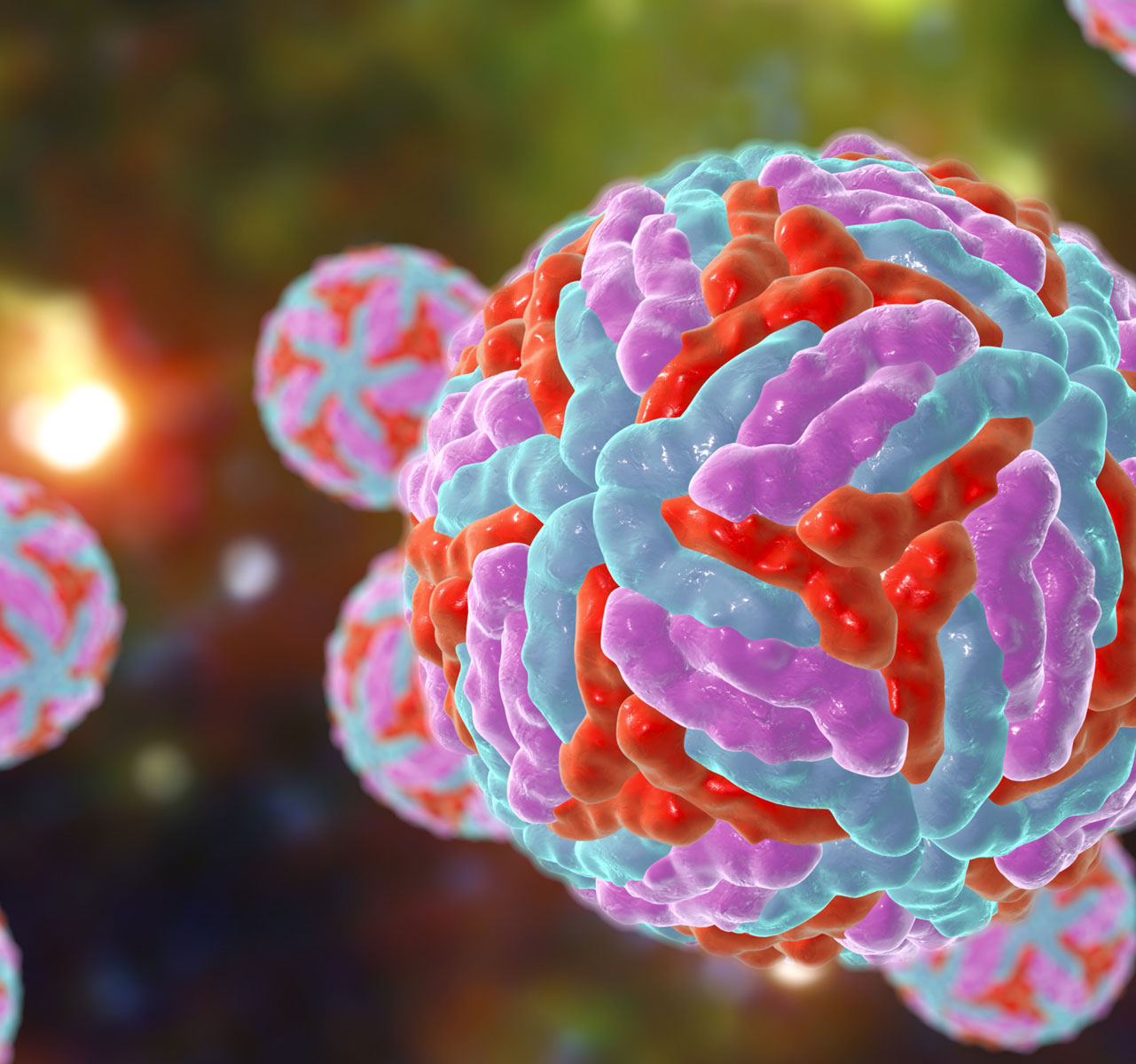
-
Rift valley fever
The threat of rift valley fever
In the 1930s, a virus was discovered in the Great Rift Valley in Kenya. The virus can lead to rift valley fever. A potentially fatal disease for farm animals such as bovines and sheep. Given the high density of farm animals in the Netherlands, the introduction of rift valley fever virus would have major consequences for the agricultural sector.
How can rift valley virus reach the Netherlands?
Rift valley fever virus is transmitted by mosquitoes. Not just tropical and subtropical mosquito species, but also the European mosquito. Over the years, rift valley fever virus has emerged across Africa, and there are concerns that it will also spread to Europe at some point. The Dutch government anticipates this by funding vaccine development.
Rift valley fever
Among new-born lambs, the death rate is almost 100%. It declines with age to about 20% in adult sheep. Furthermore, the virus causes mass abortion among pregnant sheep.
Humans can also get infected, such as via the bite of an infected mosquito or after contact with the blood of infected animals. In humans, the virus can cause temporary or permanent blindness, internal bleeding and organ failure. About one in every hundred people die as a result of rift valley fever virus infection.
Vaccines
The most effective way of preventing an infectious disease is with a vaccine. There are various rift valley virus vaccines for farm animals, but they have downsides. Either they are only partly effective, or they are not safe to use. What's more, laboratory tests cannot differentiate between the vaccine and the virus. As a result, vaccinating livestock makes it impossible to detect an outbreak, which is why the Dutch government is funding the development of a better vaccine.
BPRC research
BPRC is also involved in this process. In order to test experimental rift valley virus vaccines, we have developed a rift valley virus infection model in marmosets. The experimental infection is similar to the bite of an infected mosquito. In the days after infection, we take little bits of blood to check for the presence of rift valley fever virus. At the end of the study, we examine the various organs for the presence of the virus.
Just like any other scientific experiment, an animal study requires proper controls. Since a virus consists of genetic material surrounded by a protein shell, it cannot exist on its own. While a virus is not a living being, it can die. In order to prevent drawing false conclusions from an animal study – based on dead virus instead of live virus, for example – so-called 'control animals' are included in each study. These animals are not vaccinated before they are exposed to the virus.
The efficacy of an experimental vaccine is determined by comparing the viral load in vaccinated animals and control animals. The results of these ‘proof of principle’ studies largely determine if a vaccine candidate will be further developed for human use, or not.
The 3Rs in Rift Valley fever virus research
Anyone who works with laboratory animals in Europe is required to explain why their research cannot be performed in any other way. Can it be done without using laboratory animals? Or can it be done using fewer animals? Which techniques are available to minimise the discomfort for the laboratory animals? In other words: have the 3Rs been implemented?
Replacement
A vaccine is designed to activate an immunological memory. To evaluate an experimental vaccine, a fully functional immune system is required. In the case of the rift valley fever virus, we currently do not know how this memory is generated and what mechanisms in the immune system are responsible. As such, there is currently no animal-free method to study the interaction between a rift valley fever virus vaccine and the immune system.
We can only test experimental medication for the rift valley fever virus using animals that are susceptible to the rift valley fever virus. We can see that the virus is able to reproduce in rhesus monkey blood, which is why we are using these animals in order to test experimental medication.Reduction
Only the most promising vaccine candidates are evaluated in animals. Numerous animal-free techniques are used to prevent ineffective or less-effective vaccines from being tested in animals. Combining several vaccine candidates in one study also reduces the number of animals needed.
Refinement
The Netherlands National Committee for the protection of animals used for scientific purposes uses the following definition for the refinement of animal testing: the refinement of animal testing aims to reduce the discomfort of laboratory animals and/or to optimise laboratory animal welfare.
Good living conditions are a key part of our animal welfare policy. At BPRC, animals are always housed in social groups and never alone, and we have an extensive environmental enrichment programme. Furthermore, the animals are trained to reduce stress during experiments. Find out more.
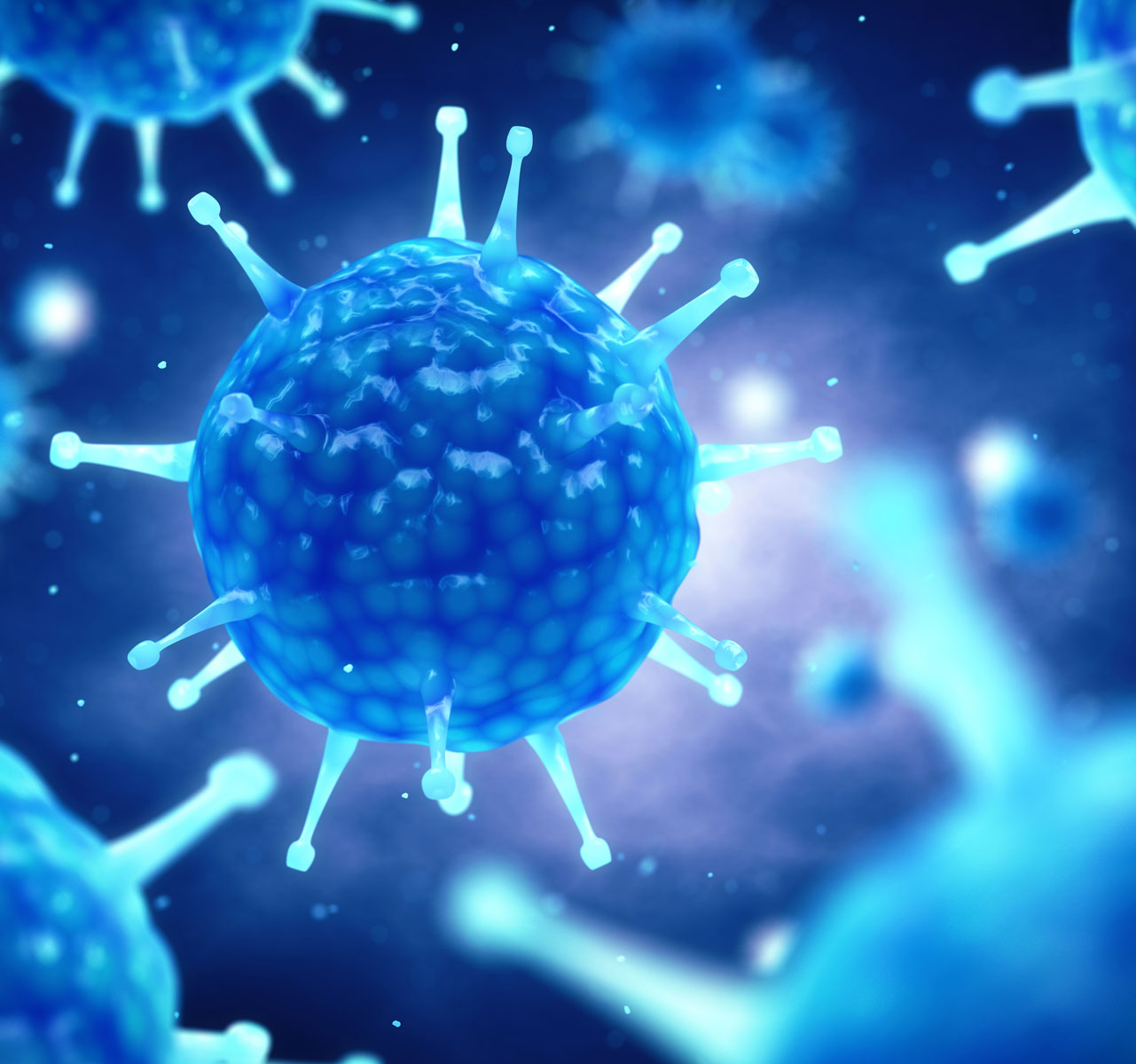
-
Tuberculosis
Tuberculosis
Tuberculosis continues to be one of the most serious infectious diseases in the world. It is estimated that one person dies every twenty seconds due to the consequences of infection with Mycobacterium tuberculosis. Moreover, approximately one quarter of the world's population have been infected without realising it, meaning that a new outbreak could happen any time. New therapies must be developed as a matter of urgency.
An effective vaccine against the consequences of infection at a young age has been on the market for several decades now: BCG (Bacille Calmette-Guérin). However, this vaccine has been found to be insufficiently effective against life-threatening tuberculous pneumonia at a later age. Moreover, this vaccine can cause severe adverse reactions in people with impaired immune systems. In addition, antibiotic-resistant strains of TB are increasingly common. As a result, we are finding it increasingly hard to treat the disease.
Why we need better medications
Although antibiotics are available on top of the BCG vaccine, infection with Mycobacterium tuberculosis requires treatment that will take many long months (as opposed to just a few days). Therefore, we urgently need a better vaccine (or vaccine programme) to combat tuberculosis, both with a view to prevention and with a view to curing the disease (therapy).
It is clear that we need better medications. However, it is proving quite hard to develop effective therapies quickly. What is stopping us is 1) a limited understanding of the mechanisms protecting host humans from TB, and 2) the various immunoevasive strategies of the pathogen, Mycobacterium tuberculosis. Many of these issues can be solved by using an animal model.
The predictive power and development of new medications
Macaques may play a vital part in our studies focusing on the prevention and treatment of TB. Macaques are very similar to humans, in terms of their immune system, but particularly in terms of their susceptibility to tuberculosis and the way in which the disease presents, which is similar to the way it presents in humans. The BCG vaccine's protective effect appears to be as variable in monkeys as it is in humans. For this reason, macaques have greater predictive power for humans in this case than any other animal model.
Both in human beings and in non-human primates, the BCG vaccine suppresses the disease, but does not protect us from being infected with Mycobacterium tuberculosis. In other words, we should probably seek to develop a better vaccine or different type of therapy. Monkeys give us the opportunity to evaluate the efficacy of such new therapies or vaccines in a model that resembles human beings.
Greater understanding
Following extensive preliminary studies, BPRC assesses potential vaccines in primate models for safety (are there any adverse reactions?), immunogenicity and protective efficacy. These studies allow us to examine the complex host-pathogen interaction under controlled conditions. Using the results of these studies and our improved understanding of this infectious disease, we seek to contribute to the development of improved therapies.
Why we need monkeys for our studiesIn some TB studies, monkeys are the most useful animal models. Pursuant to Dutch law, monkeys can only be used as experimental animals when no alternative method exists.
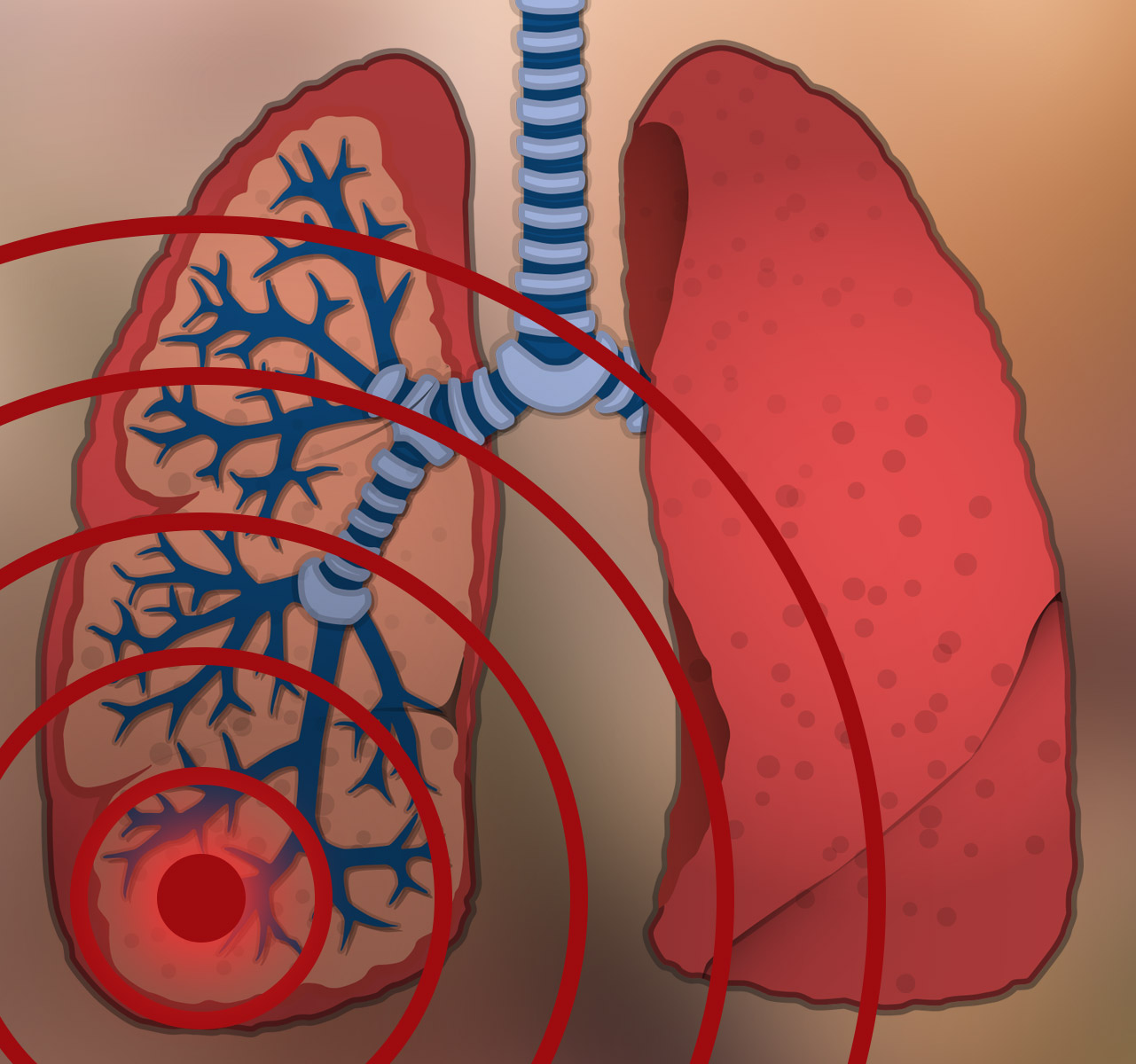
-
Malaria
Malaria
Every year, nearly half a million people die of malaria. The majority of the victims are children under the age of 5 in sub-Saharan Africa. There are medications, but these tend to lose their efficacy because the parasite will become resistant. Genuinely effective vaccines are not yet available.
Every year, nearly half a million people die of the most severe form of malaria, which is particularly prevalent among the poorest people in the world. In addition, there is another form of malaria which tends to be less fatal, but does often cause severe illness. This widespread form of malaria (called vivax-type malaria) annually causes some 14 million people to fall ill.
What the parasites do
Malaria is caused by parasites which are transmitted by mosquitoes. Following a mosquito bite, several hundreds of parasites will travel from the blood to the liver, where they will generally mature and reproduce within two weeks. The liver cell will then burst, causing all these new parasites to bring about the sepsis (blood infection) that makes people ill. If that weren't quite bad enough in itself, it was found thirty years ago that there is a type of malaria some of whose parasites remain ‘dormant’ in the liver. In recent years we have learned more about the biology of this ‘dormant’ parasite.
Complicating factors
In our mission to eradicate malaria (which is an objective shared by researchers and policymakers alike), we will need new and effective medications as well as vaccines. It is quite hard to research antimalarial vaccines and medications, because malaria parasites have a complex life cycle. What makes it so complex is that the parasites do not only develop in the mosquitoes carrying the malaria, but in the human liver, and then in the human blood. In addition, the parasites are highly able to survive in human hosts. Natural human immune systems tend to be incapable of eradicating the parasites. We will have to come up with vaccines that can do a better job of it.
How we conduct our research
Studies examining malaria parasites in rhesus macaques are a good reflection of what happens inside human beings. After all, the malaria parasites hosted by humans and rhesus macaques are closely related. Due to this close kinship, humans can be infected by parasites hosted by monkeys. In addition, monkeys' immune systems and metabolism are a lot like ours, too. Moreover, the unique characteristic of one of the main malaria parasites hosted by humans (the fact that it forms ‘dormant’ parasites in the liver) can be found in certain malaria parasites living in monkeys, as well. This means that monkey models are particularly well suited to pre-clinical trials* examining the safety and efficacy of new medications and vaccines.
In addition to studies involving animal testing, we also focus on methods designed to reduce the number of animals used in experiments, e.g. by establishing culture systems for the various types of parasites.
Our focus areas
A significant part of our research is focused on the creation of new vaccines and medications. In the initial stages, we will mainly use parasites cultivated in test tubes. Using state-of-the-art techniques, we will seek to understand the parasites' weaknesses. We also test the efficacy of new medications against ‘dormant’ liver forms of the parasite in a test tube model we have developed ourselves. Only if an active ingredient proves effective in a test tube will we test its efficacy in a monkey model, using a real malaria infection.
* BPRC has developed a new vaccine against malaria, called AMA1. This vaccine offers protection against the blood forms of the parasite. Thanks to pre-clinical trials in monkey models, we were then able to trial this vaccine in humans. Trials in Paris and Burkina Faso have shown that the vaccine is safe and provokes an immune response. Further trials involving human subjects will have to demonstrate whether this vaccine can help us provide actual protection against malaria.
Why we need monkeys for our studies
To this day, clinical trials cannot be held without prior animal testing. After all, cells in a Petri dish can behave completely differently from cells in a complex immune system. In a small minority of studies, monkeys are the animals most suitable for the study of serious diseases in humans. Pursuant to Dutch law, monkeys can only be used as experimental animals when no alternative method exists.
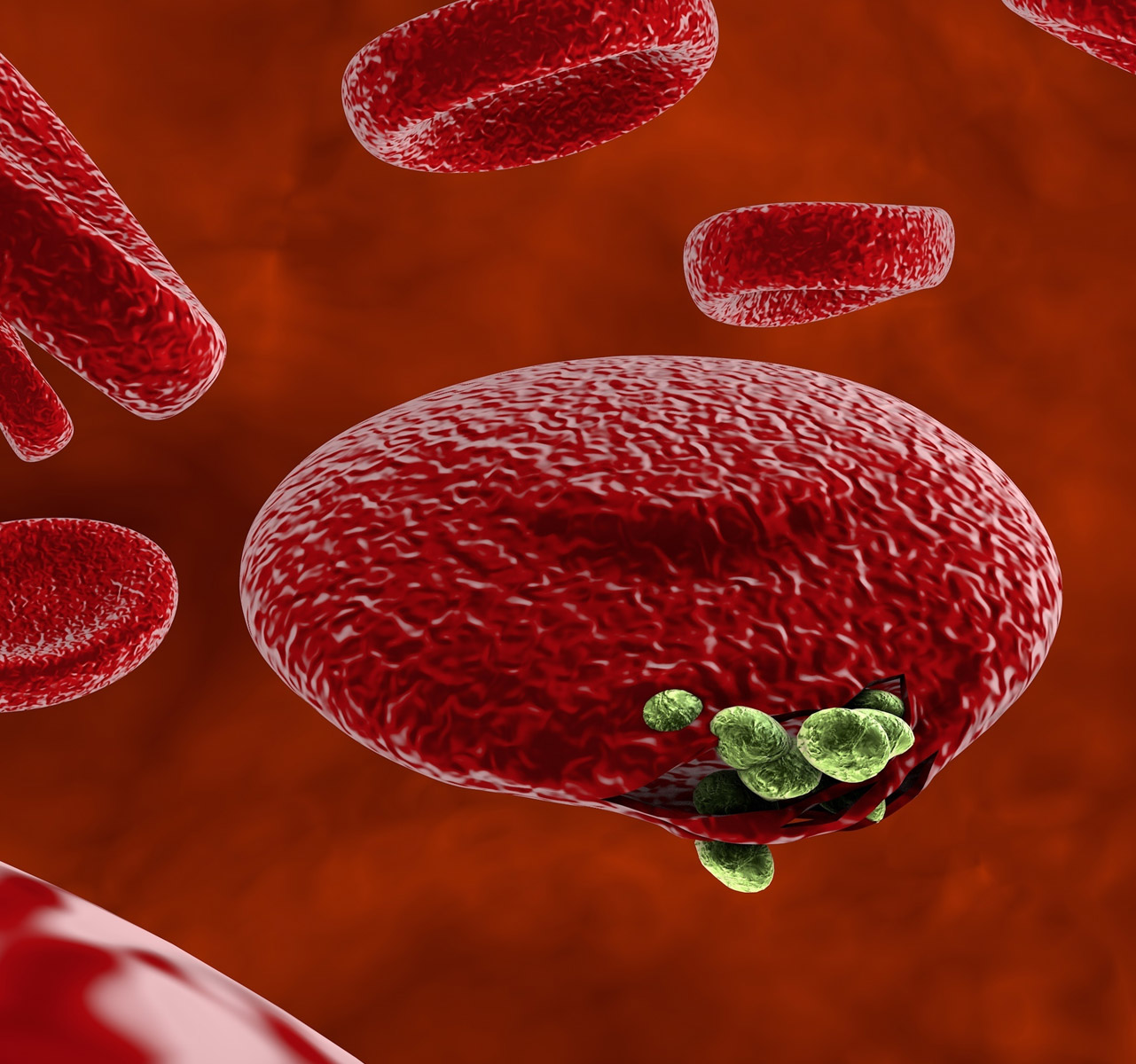
Neurobiology & Aging
-
Neurodegenerative diseases like Alzheimer's and Parkinson's disease
Neurodegenerative diseases like Alzheimer's and Parkinson's disease
As people age, they become more susceptible to various health problems, including neurodegenerative diseases. Neurodegenerative diseases are conditions in which nerve cells in the brain are increasingly damaged and/or die. This causes problems with mental functioning and limits daily activities. Common neurodegenerative diseases include Alzheimer's and Parkinson's disease. These diseases are often chronic, disabling, incurable and can have a major impact on the quality of life of affected individuals and their families.
What we do know
In recent years, the number of cases of neurodegenerative diseases has increased significantly, especially in developed countries. This is due to several factors, including the aging of the population, changes in lifestyle and improved diagnostic capabilities. As people continue to age, we expect that neurodegenerative diseases will become more common, which will put pressure on healthcare and society as a whole.
In addition to aging and hereditary risks, the environment can also influence the development of neurodegenerative diseases. There are indications that certain viruses can increase the risk of Alzheimer's and Parkinson's, but also that exercise and a healthy diet can contribute to (cognitively) healthy aging.
The role of BPRC in the fight against aging
At BPRC we look at:
- The brain, different brain cells and surrounding cerebrospinal fluid
- Changes in blood composition with aging
The brain, different brain cells and surrounding cerebrospinal fluid
We conduct research into the brain. To do this, we collect brains and cerebrospinal fluid from both our sick and normally aged monkeys. We dissect the brain and store as much material as possible in a structured manner for research. In this way, we are building a brain biobank that we can use to answer all kinds of research questions. At BPRC we use these tissues for research into the aging of the brain and (the development of) neurodegenerative disorders. In addition, through the brain biobank we can also help other researchers worldwide to answer important questions in brain research and aging.
Neuroinflammation
Neuroinflammation means that there are inflammatory reactions in the brain, mainly caused by the glial cells. These cells are also called the immune cells of the brain. We investigate how glial cells change as you get older. These cells show a lot of differences in, for example, their shape and function, where in the brain they are located, but also how they change during aging. This allows us to understand how different parts of the brain function and respond to diseases. This teaches us how glial cells work together with other cells in their environment and ultimately helps us devise specific treatments for diseases of the nervous system.
Neuropathology
In addition to neuroinflammation, diseases that affect your brain are often accompanied by damage to nerve cells and accumulations of proteins in the brain. These processes increase as these diseases worsen. However, even in healthy people these processes take place later in life, but do not always lead to disease. It is not yet known when this will lead to problems in brain functioning, resulting in reduced quality of life. We want to know whether we can investigate how these diseases occur in monkeys. To this end, we investigate whether the same changes take place in aging monkeys that are associated with old age and neurodegenerative diseases as we see in humans. In this way we want to understand how aging occurs in monkeys and how it is comparable to humans.
Changes in blood composition with aging
Aging causes many changes throughout the body, many of which leave an imprint on the blood composition. Previous research has shown that these changes can have an effect on various organs, including the brain. To find this out we investigate how blood composition changes in people during aging.
To investigate the change in blood composition during aging, we combined protein measurements (in human blood) from different studies. We discovered a number of proteins that are strongly linked to age-related diseases, such as problems with organs and dementia. What's interesting is that the degree of presence of these proteins in the blood plasma seems to be a good indication of not only how old a person is, but also how healthy a person is.
Why monkeys are needed for research
We perform analyses with the blood, brains and cerebrospinal fluid of monkeys and compare these with analyses from human research. This tells us whether monkeys are a good model to study further progression of these disease processes and the development of neurodegenerative diseases. We strive to make an important contribution with our research to ultimately stop such diseases in people.

-
Long-term neurological sequelae of COVID-19
Long-term neurological sequelae of COVID-19
We also conduct research into long-term effects after a COVID-19 infection. People with COVID-19 initially experience respiratory problems but may also notice neurological symptoms. Some even experience a variety of neurological consequences for a longer period of time after the COVID-19 infection itself, the so-called post-COVID syndrome or long-term (LONG) COVID. We are investigating the role of brain inflammation and changes in nerve cells to understand how the coronavirus affects the brain.
We investigate the effects of COVID-19 infection on the brain in monkeys. A PET-CT scan shows that inflammation in the brain is an active and continuous process, even weeks after the COVID-19 infection. We also look at the brains of deceased animals. We see a clear response of glial cells and are now further exploring the possible consequences of these changes on other cells in the brain, also a longer time after infection.

-
Our study results
The results of our studies have been significant. Not only have they helped cure serious diseases, but they have made a proper contribution to science. In addition, our studies on experimental methods that do not require animal testing have presented us with new perspectives that will help us replace, refine and reduce animal testing.
Our study results (pdf)
